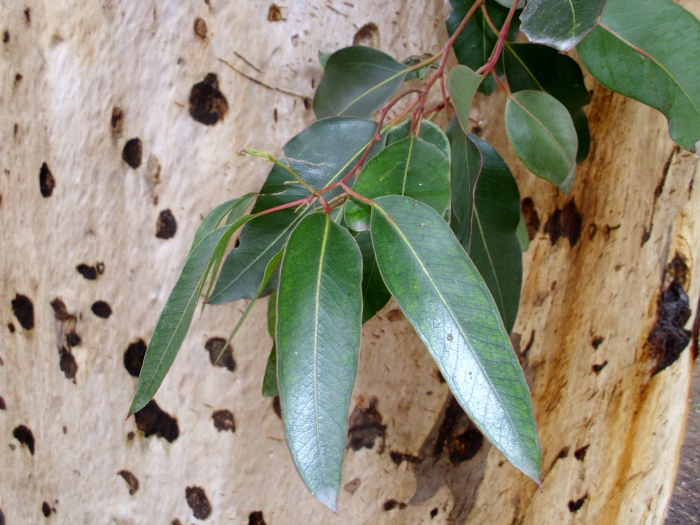Sugargum
(Eucalyptus cladocalyx)
Sugargum (Eucalyptus cladocalyx)
/
/

Bidgee
CC BY-SA 3.0 au
Image By:
Bidgee
Recorded By:
Copyright:
CC BY-SA 3.0 au
Copyright Notice:
Photo by: Bidgee | License Type: CC BY-SA 3.0 au | License URL: https://creativecommons.org/licenses/by-sa/3.0/au/deed.en | Uploader: Bidgee | Publisher: Wikimedia Commons | Title: Eucalyptus_cladocalyx_leaves_and_bark.jpg | Notes: A grove of rainbow eucalyptus trees, growing along the hana highway. Rainbow Eucalyptus (''Eucalyptus deglupta'') photo from Flickr (http://www.flickr.com/photos/amelia525/303049143/) by [http://www.flickr.com/photos/amelia525/ *amelia*] |












































































Estimated Native Range
Summary
Eucalyptus cladocalyx, commonly known as Sugargum, is an evergreen tree native to the dry woodlands and forests of South Australia, particularly in the Flinders Ranges. It can reach up to 35 meters (115 ft) in height and is known for its mottled, colorful yellow to orange bark. The leaves are strongly discolorous, with a glossy green upper surface and paler underside. The old bark is smooth and grey, shedding in irregular patches to reveal the fresh yellowy-brown bark beneath. Flowers are creamy-white and appear in summer, grouped on leafless branchlets within the tree crown, and the capsules are barrel to urn shaped. Each main branch typically ends with its own small canopy, contributing to the tree’s distinctive appearance.
Sugargum is valued for its ornamental bark, drought and frost tolerance, and its ability to attract bees with its flowers. It is commonly used as a windbreak and is suitable for urban planting, large gardens, and as a specimen tree. It thrives in full sun and can adapt to a range of soil types, including clay, loam, or sandy soils, with varying drainage capabilities. While it is an efficient user of water, it should be noted that Eucalyptus cladocalyx can become invasive outside its native range, particularly in California, and should be planted with caution.CC BY-SA 4.0
Sugargum is valued for its ornamental bark, drought and frost tolerance, and its ability to attract bees with its flowers. It is commonly used as a windbreak and is suitable for urban planting, large gardens, and as a specimen tree. It thrives in full sun and can adapt to a range of soil types, including clay, loam, or sandy soils, with varying drainage capabilities. While it is an efficient user of water, it should be noted that Eucalyptus cladocalyx can become invasive outside its native range, particularly in California, and should be planted with caution.CC BY-SA 4.0
Plant Description
- Plant Type: Tree
- Height: 40-90 feet
- Width: 25-50 feet
- Growth Rate: Rapid
- Flower Color: White, Cream
- Flowering Season: Summer
- Leaf Retention: Evergreen
Growth Requirements
- Sun: Full Sun
- Water: Low
- Drainage: Slow, Medium, Fast
Common Uses
Bee Garden, Bird Garden, Butterfly Garden, Drought Tolerant, Erosion Control, Fragrant, Hummingbird Garden, Low Maintenance, Showy Flowers, Street Planting
Natural Habitat
Dry woodlands and forests of South Australia, particularly in the Flinders Ranges
Other Names
Common Names: Sugar Gum
Scientific Names: , Eucalyptus cladocalyx, Eucalyptus corynocalyx, Eucalyptus langii,
GBIF Accepted Name: Eucalyptus cladocalyx F.Muell.